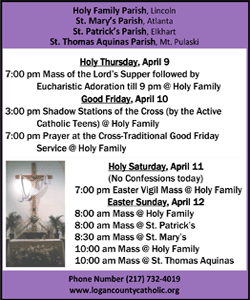|
 Mason Bees are hard workers in the world of
pollinating our flowers and crops. They are just one of many
pollinators University of Illinois Extension,
Fulton-Mason-Peoria-Tazewell Unit staff and volunteers work to
support through their educational programs and projects. Mason Bees are hard workers in the world of
pollinating our flowers and crops. They are just one of many
pollinators University of Illinois Extension,
Fulton-Mason-Peoria-Tazewell Unit staff and volunteers work to
support through their educational programs and projects.
Nicole Flowers-Kimmerle, University of Illinois Extension
horticulture educator recently held an informative presentation for
50 participants, on native Mason Bees at the Illinois Department of
Natural Resources Mason State Tree Nursery near Topeka, Il. “This is
just one of several Mason Bee programs I’ve given this year,”
mentioned Flowers-Kimmerle. “Mason Bees are an important native bee
and people of all ages have enjoyed learning about them and how to
build a bee house.”

The Orchard Mason Bee is a solitary, native bee from this area. They
emerge in early spring and pollinate, fruit trees, flowers, and
vegetables. Due to its metallic blue-black coloring, the Mason Bee
looks more like a fly. They do not make honey and they do not live
in hives, but nest in hollow stems, and insect holes. Mason Bees are
busy only 6-8 weeks in the spring. Females collect pollen and
nectar, then lay an egg inside a hollow tube-like structure, covers
the egg with mud, and continues to repeat that process up the length
of the tube. She lays up to 25 eggs during her lifetime.
“Mason Bees are considered excellent pollinators because the pollen
is loose and dry on their hairy belly,” Flowers-Kimmerle taught.
“They stay within about 300 foot radius, meandering in a nearby
circuit, which make them excellent cross pollinators, compared to
the honey bee which is a long distance pollinator that focuses on
one source at a time.”
Flowers-Kimmerle, explained how stress from chemicals and loss of
habitat have put pressure on native bee populations. “There are a
variety of ways we can help support the native bee population,”
Flowers-Kimmerle taught. “For the Mason Bees we can make bee houses
and easily provide them with the natural elements needed to survive:
water, clay mud, and blooming flowers and trees.” [to top of second
column] |

Steps to build your own bee house:
Supplies: Waterproof container, brown craft paper, pencil, tape, natural clay
(optional)
1. Clean, rinse, and dry your container. It is best if the container is long
enough to hold paper tubes are 6 to 7 inches long.
2. Cut paper into pieces that are 2.5 to 3.5 inches wide and about 7 inches
long.
3. Use a pencil to tightly roll the paper into a tube that is 8mm in diameter
and 7 inches long.
4. Use a small piece of tape to prevent the tube from unrolling.
Tubes should not be reused year to year. Use new tubes to prevent the spread of
pathogens.
5. One end of the tube must be closed. You can either fold the paper over and
secure with tape or use a natural clay that will dry to close off the tube.
6. Put the tubes into the container. It is best if they are not all the same
length. The tubes should not extend past the end of the container to protect
them from water.
7. Hang your bee house on a South or Southeast facing wall at eye level for easy
viewing. A wire mesh can be added to prevent birds from preying on the bees.
In addition to the Mason Bee lesson and bee house building project, participants
also heard about the Project Wingspan program from local Pollinator Partnership
staff member Holly Fainer. Mason Tree Nursery plays a key role in this 9-state
project. Pollinator Partnership is working with a coalition of partners and
dedicated volunteers to increase the quality, quantity, and connectivity of
pollinator habitat across the Midwest and Great Lakes Region to support
imperiled native pollinators and the vital habitat they depend on.
Local Extension Master Naturalists and Extension Master Gardeners volunteer at
the tree nursery to help support Project Wingspan,
https://www.pollinator.org/
wingspan.
For more information about native pollinators and horticulture, please visit the
University of Illinois Extension Fulton-Mason-Peoria-Tazewell Unit website at
http://extension.illinois.
edu/fmpt/.
[Christine Belless, University of
Illinois Extension] |